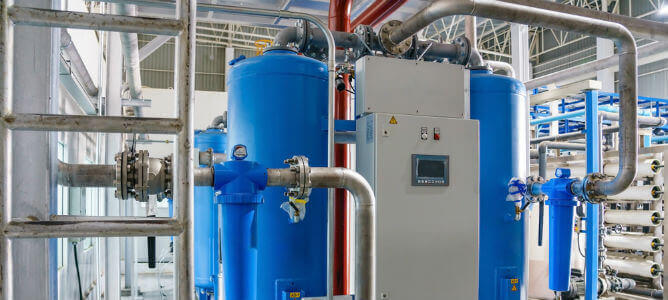Installing an air compressor dryer correctly is essential to ensure optimal performance and extended lifespan of your equipment. The first step is to choose the right location for the dryer. Ideally, the area should be clean, dry, and well-ventilated. Avoid placing the dryer near heat sources or in areas with high humidity, as these conditions can negatively affect its efficiency. Additionally, ensure that the dryer is easily accessible for routine maintenance and inspections. Once the location is selected, the next step is to prepare the foundation or mounting surface. It must be stable, level, and capable of supporting the weight of the dryer. Many systems require vibration pads or mounting brackets to minimize operational noise and movement. Securely fasten the dryer to prevent shifting during operation. A well-supported installation minimizes strain on connections and contributes to long-term reliability.

Before connecting the airlines, shut off the power and depressurize the system. This safety measure prevents accidents during installation. Carefully inspect all inlet and outlet fittings to ensure compatibility with your existing piping system. Use the appropriate thread sealant or tape to avoid air leaks at the joints. It is recommended to install isolation valves before and after the dryer to simplify future maintenance tasks without interrupting the entire system. With the air connections in place, focus on the electrical and drainage setup. Verify the dryer’s electrical requirements and connect it according to the manufacturer’s specifications. Ensure proper grounding and circuit protection for safety. For the drainage system, use a suitable condensate drain or automatic drain valve. Routing the drain line properly is crucial to avoid backflow or clogs, which could damage the dryer or reduce performance.
After completing all connections, perform a thorough inspection to check for alignment, secure fittings, and any signs of potential leaks. Power on the system and observe the dryer’s operation. Monitor temperature, pressure, and flow to ensure everything is functioning within the recommended parameters. If available, review the control panel for any warning indicators or errors. A stable start-up process indicates that the installation has been successful. It is important to establish a routine maintenance plan. Regularly clean filters, check for moisture buildup, and inspect all components for wear or damage. Proper maintenance not only extends the life of the dryer but also maintains consistent air quality for your system. Keeping a log of inspections and servicing helps you stay ahead of issues and ensures the air compressor dryer operates at peak efficiency for years to come.



